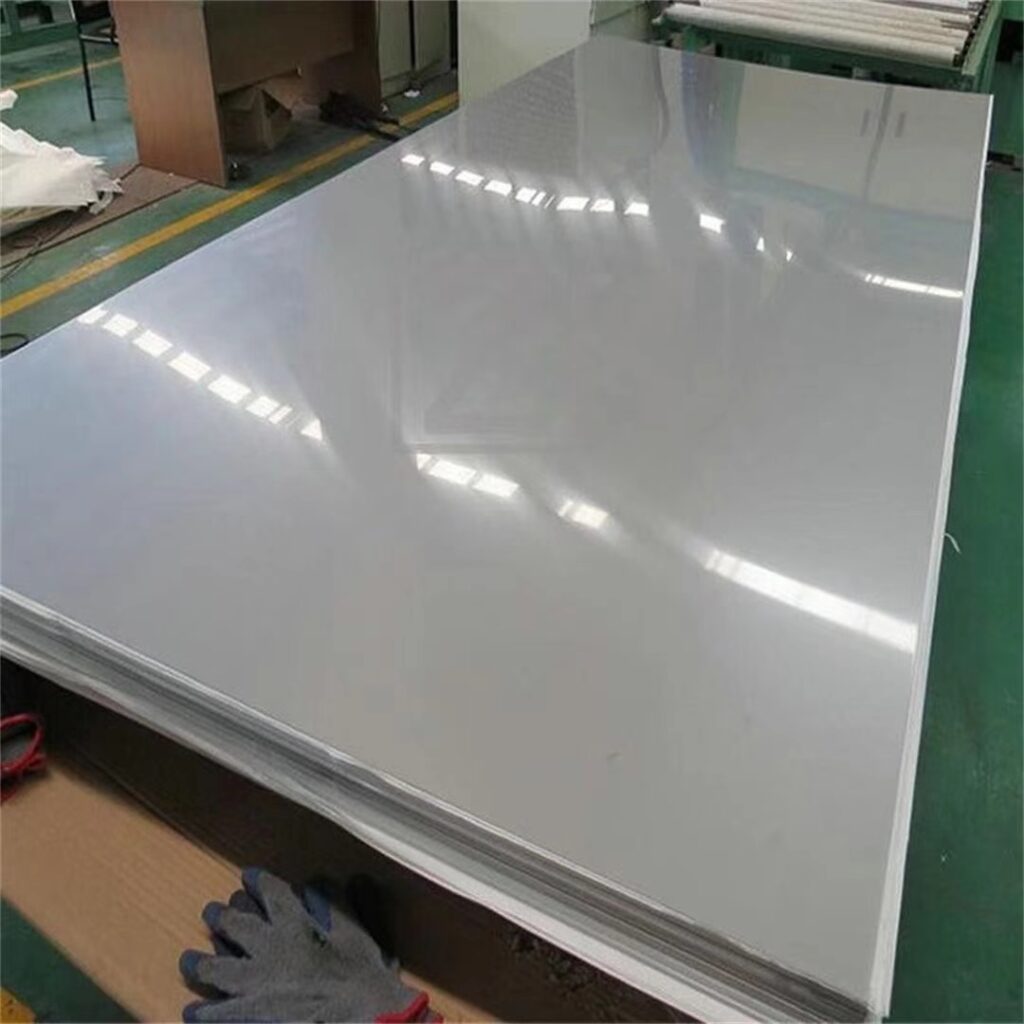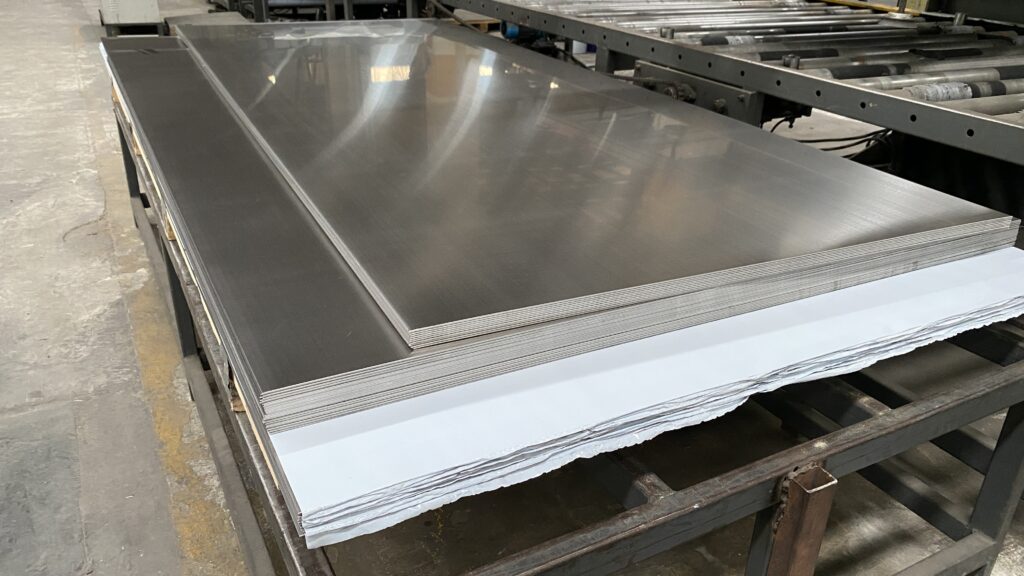Welcome to My Blog!
Before we dive into the content, I’d love for you to join me on my social media platforms where I share more insights, engage with the community, and post updates. Here’s how you can connect with me:
Facebook:https://www.facebook.com/profile.php?id=100090063158454
Now, let’s get started on our journey together. I hope you find the content here insightful, engaging, and valuable.

Introduction
316 stainless steel material is renowned for its exceptional durability, corrosion resistance, and overall resilience, making it a popular choice in the construction industry. Whether in infrastructure exposed to harsh weather or in architectural projects demanding aesthetic appeal, 316 stainless steel material offers numerous advantages. In this blog, we’ll explore these benefits in depth, covering everything from its unique properties and applications to the environmental and economic impacts of using this material in construction.
Table of Contents
- Introduction
- What is 316 Stainless Steel Material?
- Key Properties of 316 Stainless Steel Material
- Advantages of 316 Stainless Steel Material in Construction
- Comparison with Other Stainless Steel Types
- Applications of 316 Stainless Steel Material in Construction
- Table: Key Properties of 316 Stainless Steel Material
- Environmental and Economic Benefits
- Maintenance Tips for 316 Stainless Steel in Construction
- Conclusion
- FAQs
What is 316 Stainless Steel Material?
316 stainless steel material is an austenitic stainless steel known for its high resistance to corrosion and excellent mechanical properties. With approximately 16-18% chromium, 10-14% nickel, and 2-3% molybdenum, this material is designed to perform in demanding environments, particularly those exposed to saltwater or harsh chemicals. The molybdenum in 316 stainless steel material enhances its ability to withstand corrosion, especially from chlorides, making it ideal for marine, coastal, and chemical environments.
Key Properties of 316 Stainless Steel Material
316 stainless steel material offers unique properties that make it well-suited for construction:
- Corrosion Resistance: Outstanding resistance to chloride environments, acid exposure, and oxidation.
- Strength and Durability: With high tensile and yield strength, 316 stainless steel material can support heavy loads and endure structural stress.
- Temperature Tolerance: Maintains structural integrity across a wide temperature range, making it suitable for both extreme cold and heat.
- Low Maintenance: Resistant to staining, rust, and tarnishing, 316 stainless steel requires minimal upkeep.
- Aesthetic Appeal: Provides a smooth, polished finish, ideal for architectural elements that require a high-quality appearance.
These properties make 316 stainless steel material one of the most versatile materials available for construction projects.
Advantages of 316 Stainless Steel Material in Construction
1. Superior Corrosion Resistance
The primary advantage of using 316 stainless steel material in construction is its high resistance to corrosion, especially in environments with saltwater, chlorides, and industrial chemicals. The molybdenum content ensures that the material withstands rust and degradation, making it ideal for projects in coastal and industrial areas.
2. High Tensile Strength
316 stainless steel material boasts high tensile strength, which is crucial in construction projects requiring materials that can handle substantial weight and pressure. Its ability to withstand heavy loads without deforming makes it suitable for structural components like beams, columns, and reinforcements.
3. Resilience to Temperature Extremes
With a high melting point and resilience in both cold and hot climates, 316 stainless steel material is ideal for structures exposed to fluctuating temperatures. It can handle extreme cold without becoming brittle and extreme heat without losing strength, which is essential in applications like outdoor structures, pipelines, and heat exchangers.
4. Aesthetic Appeal
For architects, 316 stainless steel material offers an attractive, polished appearance that requires minimal maintenance. Its sleek, modern look adds to the visual appeal of buildings, especially when used in visible elements like railings, facades, and sculptures.
5. Environmental and Economic Benefits
316 stainless steel material is fully recyclable, and many products made from it are produced with recycled materials. This sustainability factor is essential as the construction industry focuses on reducing environmental impact. Additionally, the durability of 316 stainless steel minimizes the need for replacements and repairs, making it cost-effective over the long term.
6. Easy Fabrication and Welding
The versatility of 316 stainless steel material in construction is further enhanced by its ease of fabrication and welding. It can be easily cut, shaped, and welded, making it a flexible choice for complex design requirements and structural modifications.
7. Longevity and Low Maintenance
316 stainless steel material is highly durable, retaining its properties over decades with minimal maintenance. Its resistance to rust, staining, and wear means that structures can remain intact and visually appealing over time, reducing the need for frequent repairs or replacements.
Comparison with Other Stainless Steel Types
| Property | 316 Stainless Steel | 304 Stainless Steel | 316L Stainless Steel |
|---|---|---|---|
| Corrosion Resistance | High | Moderate | High |
| Molybdenum Content | 2-3% | None | 2-3% |
| Strength | High | High | Slightly lower than 316 |
| Temperature Tolerance | Excellent | Good | Excellent |
| Best Applications | Marine, chemical, outdoor | Indoor, general purpose | Medical, food, marine |
This comparison shows how 316 stainless steel material is better suited for harsh environments due to its higher corrosion resistance and strength, making it a superior choice in construction.
Applications of 316 Stainless Steel Material in Construction
316 stainless steel material is commonly used in construction for a variety of applications:
- Bridges and Coastal Structures: Due to its corrosion resistance, 316 stainless steel is often used in bridge supports and coastal installations where structures are exposed to saltwater.
- Industrial Buildings: In chemical plants and processing facilities, it’s commonly used for piping, tanks, and structures that encounter harsh chemicals.
- Architectural Elements: Its aesthetic appeal makes it popular for facades, railings, and other decorative architectural features.
- Public Infrastructure: It’s widely used in wastewater treatment plants, due to its ability to resist corrosion from water and chemicals.
- Marine Environments: Ideal for shipbuilding and dock structures, where seawater exposure requires superior corrosion resistance.
Table: Key Properties of 316 Stainless Steel Material
| Property | Value |
|---|---|
| Corrosion Resistance | Excellent (especially in chloride-rich environments) |
| Tensile Strength | 515 MPa |
| Yield Strength | 205 MPa |
| Hardness | 217 HB (Brinell Hardness) |
| Density | 8.0 g/cm³ |
| Melting Point | 1371°C – 1399°C |
| Thermal Conductivity | 16.3 W/m-K |
| Modulus of Elasticity | 193 GPa |
| Welding Capability | High, with no pre- or post-heat treatment |
| Sustainability | 100% Recyclable |
These properties emphasize why 316 stainless steel material is preferred in construction for projects that require durability, resistance to corrosion, and minimal maintenance.
Environmental and Economic Benefits
316 stainless steel material not only provides durability but also contributes to environmental sustainability. This material is fully recyclable, which means that once a structure or component reaches the end of its life, it can be melted down and repurposed without losing any of its original properties. This sustainable cycle reduces the demand for new raw materials and minimizes environmental impact.
Economically, 316 stainless steel material is cost-effective in the long run. While the initial investment may be higher than alternatives, the longevity and low maintenance requirements make it an excellent choice for projects requiring durability and reliability.
Maintenance Tips for 316 Stainless Steel in Construction
While 316 stainless steel material is low-maintenance, following some basic guidelines can ensure it remains in optimal condition for decades.
- Regular Cleaning: Rinse the material periodically, especially in outdoor or coastal environments where salt or pollutants might accumulate.
- Avoid Abrasive Cleaners: Use non-abrasive cleaners to avoid scratching the material’s surface.
- Inspect for Damage: Periodically inspect for scratches or dents, which could compromise the material’s corrosion resistance.
- Use Protective Coatings: In harsh environments, consider applying a protective coating for an added layer of defense.
Conclusion
316 stainless steel material is an indispensable material in construction due to its unparalleled combination of durability, corrosion resistance, and versatility. From bridges and coastal structures to architectural facades and public infrastructure, its unique properties make it suitable for a vast array of applications. Additionally, its environmental sustainability and economic benefits make it a valuable investment for any construction project focused on quality and longevity.

FAQs
1. Why is 316 stainless steel material preferred over 304 stainless steel in construction?
316 stainless steel material contains molybdenum, which provides enhanced corrosion resistance, particularly in environments with high chloride exposure, such as coastal or industrial areas.
2. Can 316 stainless steel material be used in high-temperature environments?
Yes, 316 stainless steel material can withstand high temperatures and remains stable, making it suitable for applications involving heat.
3. Is 316 stainless steel material eco-friendly?
Absolutely. It’s 100% recyclable and can be repurposed without losing its properties, making it a sustainable choice in construction.
4. How should I maintain 316 stainless steel material used in construction?
Rinsing with fresh water, using mild cleaning solutions, and inspecting for damage are good maintenance practices to ensure longevity.
5. What is the lifespan of 316 stainless steel material in construction?
With proper maintenance, 316 stainless steel material can last several decades, making it a durable and cost-effective material for long-term use.
